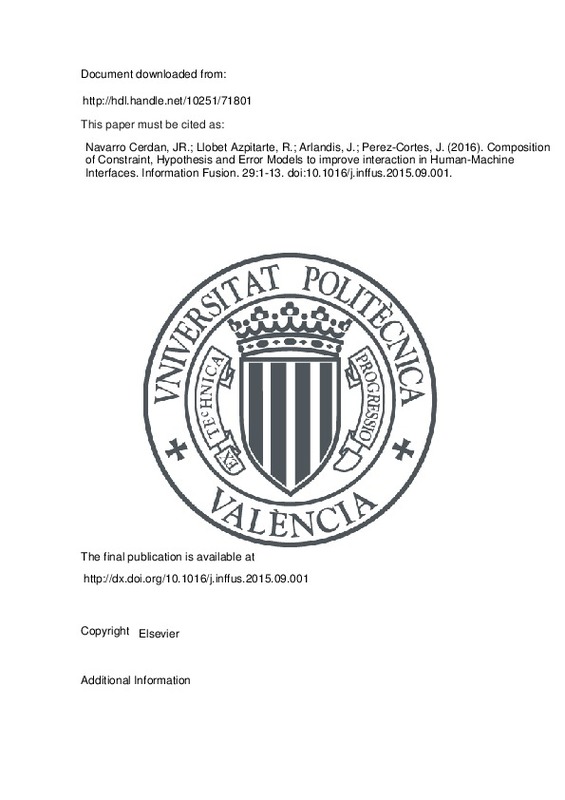|
Resumen:
|
We use Weighted Finite-State Transducers (WFSTs) to represent the different sources of information available: the initial hypotheses, the possible errors, the constraints imposed by the task (interaction language) and the ...[+]
We use Weighted Finite-State Transducers (WFSTs) to represent the different sources of information available: the initial hypotheses, the possible errors, the constraints imposed by the task (interaction language) and the user input. The fusion of these models to find the most probable output string can be performed efficiently by using carefully selected transducer operations. The proposed system initially suggests an output based on the set of hypotheses, possible errors and Constraint Models. Then, if human intervention is needed, a multimodal approach, where the user input is combined with the aforementioned models, is applied to produce, with a minimum user effort, the desired output. This approach offers the practical advantages of a de-coupled model (e.g. input-system + parameterized rules + post-processor), keeping at the same time the error-recovery power of an integrated approach, where all the steps of the process are performed in the same formal machine (as in a typical HMM in speech recognition) to avoid that an error at a given step remains unrecoverable in the subsequent steps. After a presentation of the theoretical basis of the proposed multi-source information system, its application to two real world problems, as an example of the possibilities of this architecture, is addressed. The experimental results obtained demonstrate that a significant user effort can be saved when using the proposed procedure. A simple demonstration, to better understand and evaluate the proposed system, is available on the web https://demos.iti.upv.es/hi/. (C) 2015 Elsevier B.V. All rights reserved.
[-]
|







![[Cerrado]](/themes/UPV/images/candado.png)


